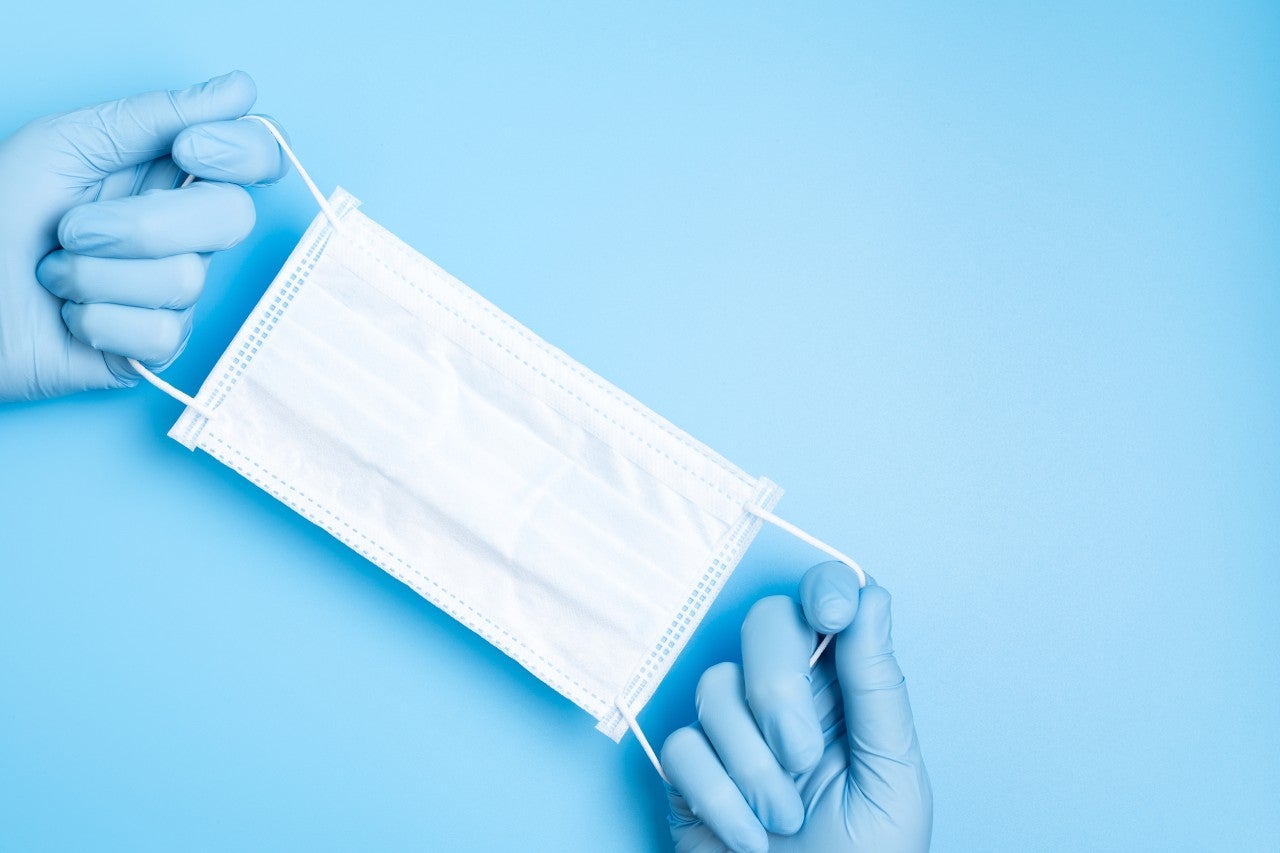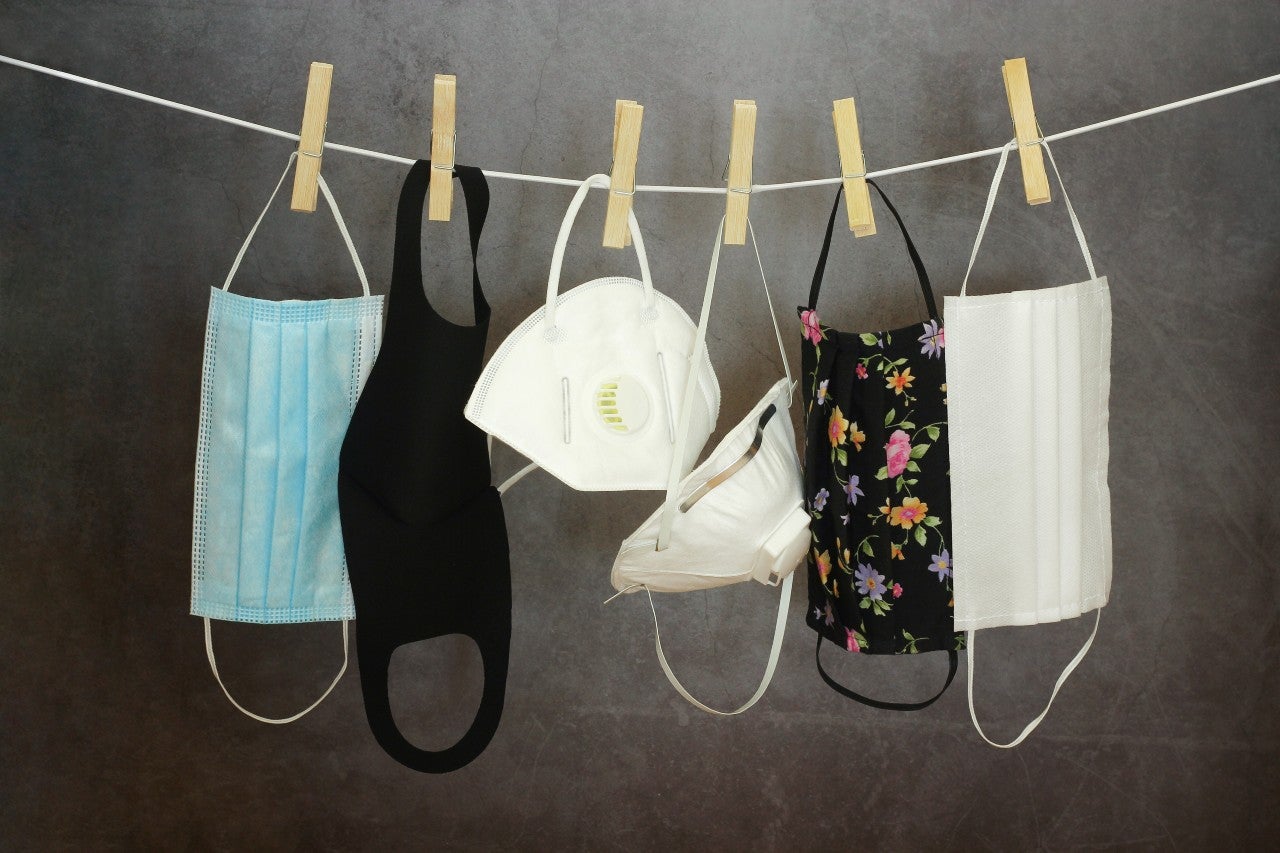
In 2020, when SARS-CoV-2 was spreading like wildfire across the globe, an immediate problem for front-line healthcare workers was that the supply of PPE couldn’t meet the sudden surge in demand. As scientists learned more about shielding themselves from it, debate ensued about face coverings and which materials best safeguard the wearer and those in close proximity. Allie Anderson speaks to Dr Frank Gunther, from the Division of Infection Control and Hospital Epidemiology at Philipps University Marburg, associate professor Ryan Lively and aerosol scientist associate professor Nga Lee Ng at the School of Chemical and Biomolecular Engineering, and associate professor Liu Zheng from Nanyang Technological University about how the science of mask wearing evolved during the pandemic, and which materials are known now to be the most protective and have the best filtration efficacy.
At the beginning of 2020, a lot of hospitals had difficulty getting adequate PPE because the market was emptied by the situation in China. Because of that, a lot of new products from primarily unknown manufacturers flooded the market and infection control specialists didn’t know how effective they were.
“There was also a lot of false information, with people stating that good protection is offered only by so-called FFP2 masks or N95 masks, and all other masks are worthless in protecting the individual who wears them,” says Dr Frank Gunther, from the Division of Infection Control and Hospital Epidemiology at Philipps University Marburg, Germany. He and his colleagues designed a system to assess how well a range of different materials that were (or could be) used to make face masks filtered aerosol particles.
In 2020, he and a team of scientists conducted a series of studies exploring this and published their findings in March 2021. The research involved testing three different measures: the filtration efficacy of the mask material, the air pressure on either side of the mask and the filtration efficacy of the mask as worn – meaning how masks performed in real-world situations and how the way they fit a person’s face influenced their performance.
The best mask for the job
The team selected 32 different types of face coverings designed for use in hospitals. They included cloth masks, surgical masks, face shields and respirators. Some of these met quality standards set by the EU and China, while others did not.
In the first experiment, the masks were attached to a tube inside an airtight tank, which was pumped with an aerosol containing the chemical di-ethyl-hexyl-sebacate (DEHS).
These particles were 0.5µm – thought to be representative of SARS-CoV-2 particle clusters. The particles that made their way through into the tube were counted, which gave a measurement of how the material prevented outside particles from filtering through.
This experiment confirmed the high filtration efficacy of KN95 and FFP2 respirators as 94% and 98%, respectively. However, as measured in the second part of the study, they also showed a drop in pressure (32.3PA/cm² for KN95 and 26.8PA/cm² for FFP2) consistent with inhalation and exhalation resistance.
In the third part of the experiment, the same set-up was used to explore the ‘as-worn’ filtration efficacy, but the masks were affixed to a life-sized dummy head with a skin-like coating and an artificial trachea, rather than an air-collecting tube, to mimic the conditions of wearing the mask.
KN95 respirators performed worse than expected, filtering just 41% of particles, with the FFP2 type filtering 65%. The former produced similar results as surgical facemasks, whose as-worn filtering efficacy was 47% compared with a material filtration efficacy of 70%, and a comparatively low pressure drop of 12.9PA/cm².
The worst-performing coverings overall were cloth masks, indicated by a material and as-worn filtration efficacy of 28% and just 11% respectively. However, the pressure drop was as low as 6.9PA/cm², meaning breathability was markedly higher than other masks.
The study’s authors concluded that the best benefit of a face covering is achieved by both good filtration and breathability, as indicated by a low pressure drop. “If you have a high filtration efficacy, in most cases you also have a large pressure drop because of the breathing resistance of the mask material,” says Gunther.
These masks, therefore, may be less comfortable to wear for long periods, because it’s more difficult to breathe. So, the best face covering depends on the circumstances.
“[Surgical] facemasks have good filtration that might be good enough for low and medium-risk situations, if there is no specific exposure risk and if you additionally keep a distance,” Gunther adds.
“For high-risk situations, if you are working on Covid-19 patients, FFP2 respirators are the ones that should be used,” he says. They should be limited to short periods of wear due to the low breathability, which would create greatly increased breathing exertion over time and lead to exhaustion.

Home-made masks have the lowest protection
Gunther’s research found the lowest protection against penetration from outside aerosol particles was provided by cloth masks. However, cloth facemasks are better at minimising the spread of Covid-19 than no mask at all. They have also been the only option for people who couldn’t source other types of masks.
Researchers at Georgia Institute of Technology recognised this early in the pandemic and decided to use their expertise to investigate the filtration properties of different fabrics.
Ryan Lively, associate professor at the School of Chemical and Biomolecular Engineering, says: “Around April last year, we realised there was not a great understanding of home-made masks, but everyone was wearing them.”
As a filtration expert, Lively teamed up with colleagues – including aerosol scientist associate professor Nga Lee Ng – to design a study testing 33 different commercially available materials.
They included single-layer woven fabrics (like cotton and polyester), mixed fabrics, non-woven materials, and materials used in hospitals – such as sterilisation wrap used to package surgical instruments. The researchers used an atomiser to generate submicron particles, which have a diameter of <1µm. By comparison, a human hair has a diameter of around 70µm.
“In terms of filtration, submicron particles are the most difficult to be filtered out,” explains Ng. “In the study, we focused on these submicron particles because those larger than 1µm are not that hard for materials to filter out.”
The particles were passed through two separate channels, one of which had the fabric sample attached to it, while the other did not. “We measured the aerosol concentration downstream of those two channels, and from the difference we were able to calculate a filtration efficiency,” she adds.
Using submicron particles of different sizes – some as small as 50nm (0.05µm) – enabled the researchers to measure the filtration rate for each size particle and calculate a total filtration rate for the entire distribution of particles.
However, testing multiple layers of even the poorer-performing cotton fabrics yielded improved results. “If you are going to use a cotton mask, it’s important to double or triple up. We have tested two and three layers of materials, and the filtration efficiency of those materials is about 50%, which is not too bad in terms of a homemade mask,” Ng comments.
It’s important to note that the filtration efficiency of a mask – say, 95% for an N95 respirator – often refers to the percentage of particles of the smallest size that are rejected. “But we humans expel a broad distribution of particles and what matters in terms of limiting exposure [to Covid-19] is the sum or the total rejection of all of those particles,” Lively says.
“So, even the cloth masks, which have poor rejection of 0.3µm particles, still have good overall rejections from the total distribution of particles that we expel. That’s important, because one message we don’t want is that cloth masks are ineffective. A cloth mask is significantly better than no mask and it makes a big difference.”
Almost perfect filtration efficacy with N95 and FFP2
It’s generally accepted that the gold standard in face coverings is the N95 and FFP2 (and the similar FFP3) respirators, on account of their exceptional filtration efficacies. However, before the outbreak of Covid-19, researchers in Singapore were already working on achieving even higher performance.
Associate professor Liu Zheng from Nanyang Technological University (NTU) developed a now-patented reusable ‘nanotech’ facemask that attracts and traps nanoparticles. He and his team developed a method to manufacture a fabric polypropylene material – like that used for disposable surgical masks – with dielectric properties integrated into plastic fibres.
“That means when we breathe through it, the mask vibrates and that will generate electric charges on the fabric, and those charges will attract small particles from the breath and trap them, which makes the filtering efficiency very high,” Liu explains.
“Also, the fabric is very light – much thinner than fabric in the market – so the resistance [to breathing] is very low compared with commercially available masks.”
Testing showed the composite fabric has 50% higher filtration efficiency than standard polypropylene masks (like the N95) and filtered up to 99.9% of particles as small as 0.3µm.
The fabric’s fibres measure just 200 to 300nm in diameter, meaning it’s far less dense than the comparable N95 respirator and, therefore, easier to breathe through and more comfortable. It is also reusable and can be washed up to ten times.
However, working with fellow scientists at NTU, Liu was able to further improve the efficacy of his face masks by combining it with an antimicrobial copper coating, developed by his colleague, Professor Lam Yeng Ming.
The solution comprises millions of tiny nanoparticles, which collectively provide a much larger surface area for virus and bacterium to encounter, and the copper then induces oxidative damage to viral and bacterial cells. In tests, researchers introduced the coated fabric to droplets of multi-drug-resistant bacteria, which were dead within 45 seconds.
Combining the two developments, the nanotech fabric traps bacteria and virus particles and the antimicrobial coating kills them on contact, making a unique and superior face covering. With the science in place, Liu wanted to make the technology widely available.
“After the pandemic started, we had done the fundamental research, but we realised we needed to focus on the scalability of our product,” he says. “Making a few masks and making thousands or millions of masks is a different thing. We are almost at the stage of mass production: we already have a prototype, and the technology is ready for large-scale production. It will be very soon that we see it in the market.”
This article first appeared in Medical Device Developments Vol. 2 2021. The full publication can be viewed online here.






